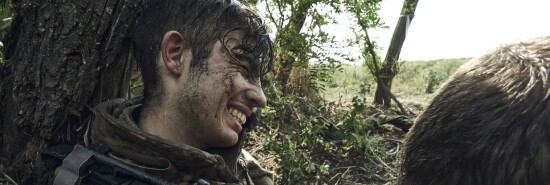
In Ukraine, going on offensive is the hardest part
Daniel DePetris
Video Embed
Ukraine’s counteroffensive, soon to enter its fourth month, is at best making marginal gains along the 1,000-mile front line. Russia’s network of defenses, composed of minefields, machine-gun nests, anti-tank traps, and trenches, has proven to be a formidable obstacle for Ukrainian troops tasked with pushing the hundreds of thousands of Russian troops further east. U.S. Joint Chiefs of Staff Chairman Mark Milley’s assessment back in July has turned out to be prescient: “It’s going to be very long, and it’s going to be very, very bloody.”
Indeed, anybody who thought Ukrainian troops would be able to mimic their miraculous victory in Kharkiv 12 months earlier was setting themselves up for disappointment.
PRO-UNION BIDEN FEELS POLITICAL PINCH OF HISTORIC UAW STRIKE
Unlike in the northeast at that time, when Russian troops were caught completely unaware, the Russian army had months to build up fortifications along the front in Zaporizhzhia and Kherson — oblasts that Moscow had partially controlled since the first several weeks of the war. The Ukrainians endured extensive casualties in June and July, when some Western-donated tanks were quickly disabled after they ran into an ocean of mines.
For the Ukrainians, a high casualty rate is simply not an option due to the limited manpower at their disposal; the Russians may have exposed themselves as incompetent and dispirited war-fighters, but they have an advantage in the raw power metrics such as men and ammunition that often determine winners and losers.
The Ukrainian army has adapted its tactics, relying on smaller assault groups. This generated some pushback in Washington, which advised Kyiv to focus on a single quadrant in order to accelerate a breakthrough. The Ukrainians dismissed the advice and opted to spread units across multiple points along the front, near Bakhmut in Donetsk, Robotyne in Zaporizhzhia, and Kherson. The aim was to stretch out the Russians over a larger distance and put more stress on their logistics system.
Speaking of Russia’s logistics system, the Ukrainians have increasingly utilized their fleet of drones to strike Russia’s command-and-control posts, ammunition dumps, and fuel facilities far behind the front. This, of course, is nothing new; the Ukrainians have been hitting the Russian military’s supply lines ever since the war began, including inside Russia itself.
Those attacks, however, have become almost routine. Crimea, the Ukrainian peninsula Russia annexed in 2014, remains at the top of Ukraine’s list of targets. Last week, a Ukrainian missile struck a shipyard used to repair vessels in Russia’s Black Sea fleet. The Ukrainians also destroyed an S-400 air defense system stationed in Crimea.
On their side, the Russians are seeking to increase the pressure in the northeast.
According to Ukrainian officials, the Russians have stationed approximately 100,000 troops, 900 tanks, and 555 artillery systems near the Kharkiv region in the hope of taking the town of Kupiansk, which the Russians controlled before being routed in September 2022. Russian artillery and missile strikes have been pounding Ukrainian positions for weeks on end. Thus far, Russian ground forces haven’t had much success in breaking Ukraine’s defenses there.
The Ukrainians aren’t taking their success for granted. If Russia does manage to recapture Kupiansk — and that is still a big “if” — Kharkiv becomes much more vulnerable and forces Ukrainian commanders to weigh a difficult decision. Do they move men and materiel to the area, thereby undermining their efforts in the southeast? Or do they seek to quicken their counteroffensive in an attempt to draw Russian troops away?
Right now, all of these questions are hypothetical. Both sides have their hands full in the present, where the yard-by-yard slugfest of the last three months is making last year’s territorial gains look like modern-day blitzkriegs. While the Ukrainians have retaken about 50% of the land Russian forces previously occupied, they have long since run head-first into a Russian wall, where even a mile or two of terrain gained comes at a high price. For Kyiv, it’s not just a matter of taking land but also having the strength to keep it.
The Russian army has had even less success on the offensive. The last notable gain for Moscow was the mid-sized city of Bakhmut in May, a campaign that took 10 months and 20,000 fatalities to achieve. The last successful offensive before Bakhmut was in Lysychansk 10 months prior.
CLICK HERE TO READ MORE FROM THE WASHINGTON EXAMINER
If the war in Ukraine has taught us anything, it’s that predicting outcomes is liable to serve you a big dose of humble pie. But what we can say with confidence is that Milley was right. This war is a bloody slog, and it will continue to be until one of two things happens: one side beats the other, or mutual exhaustion sets in.
Daniel DePetris (@DanDePetris) is a contributor to the Washington Examiner’s Beltway Confidential blog. His opinions are his own.
